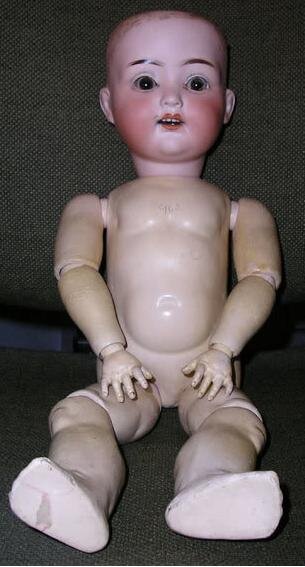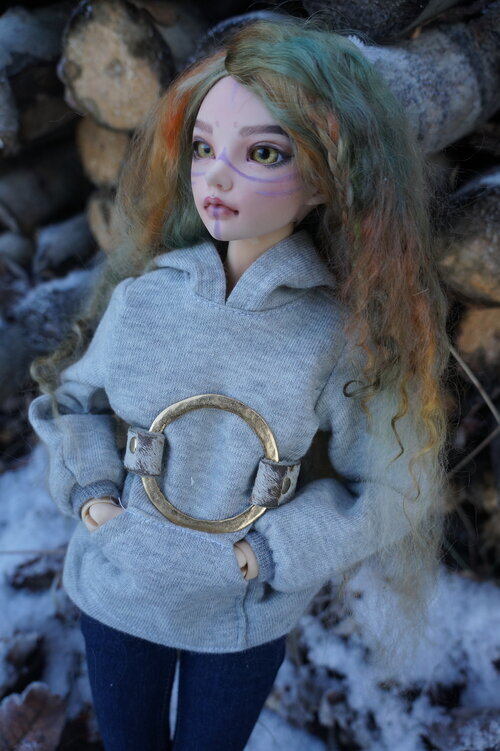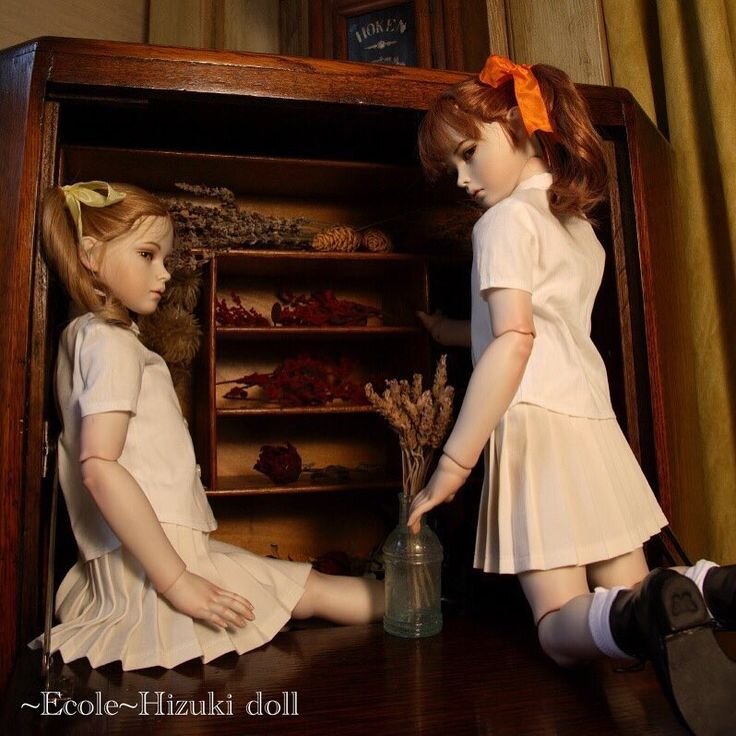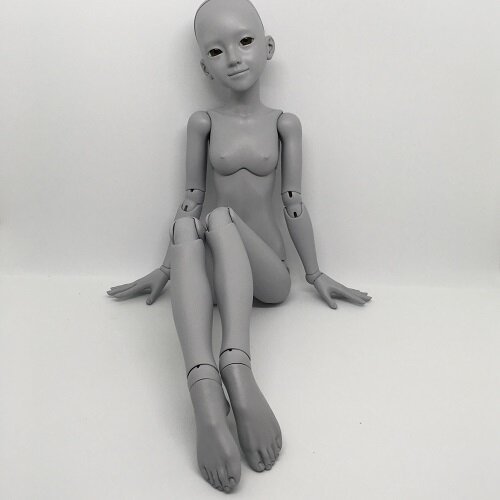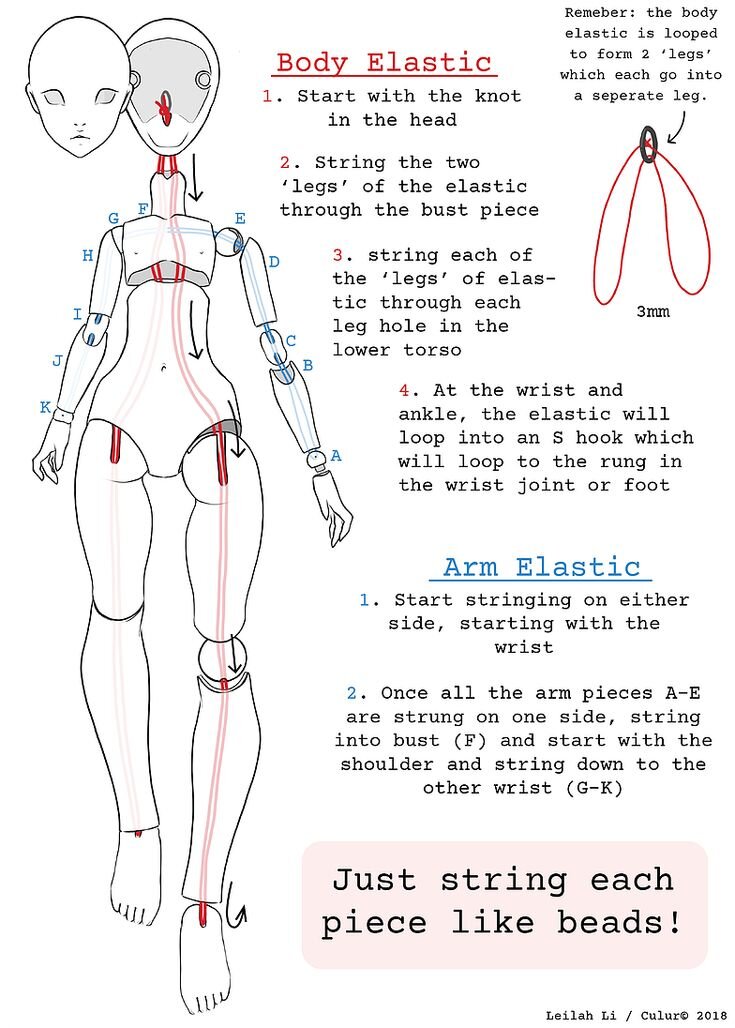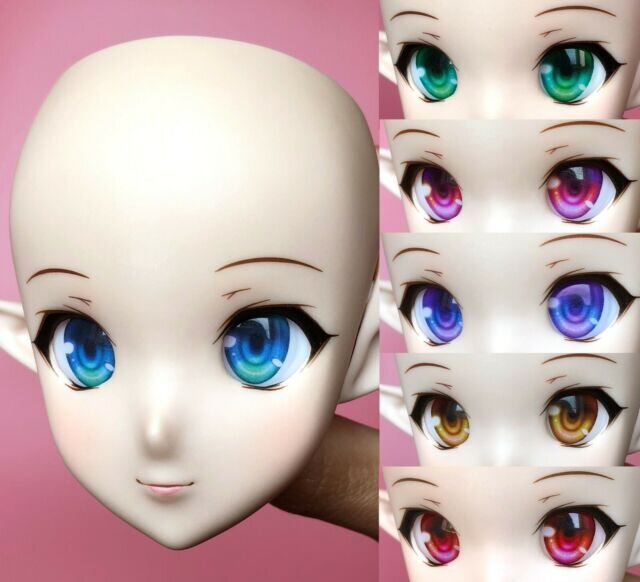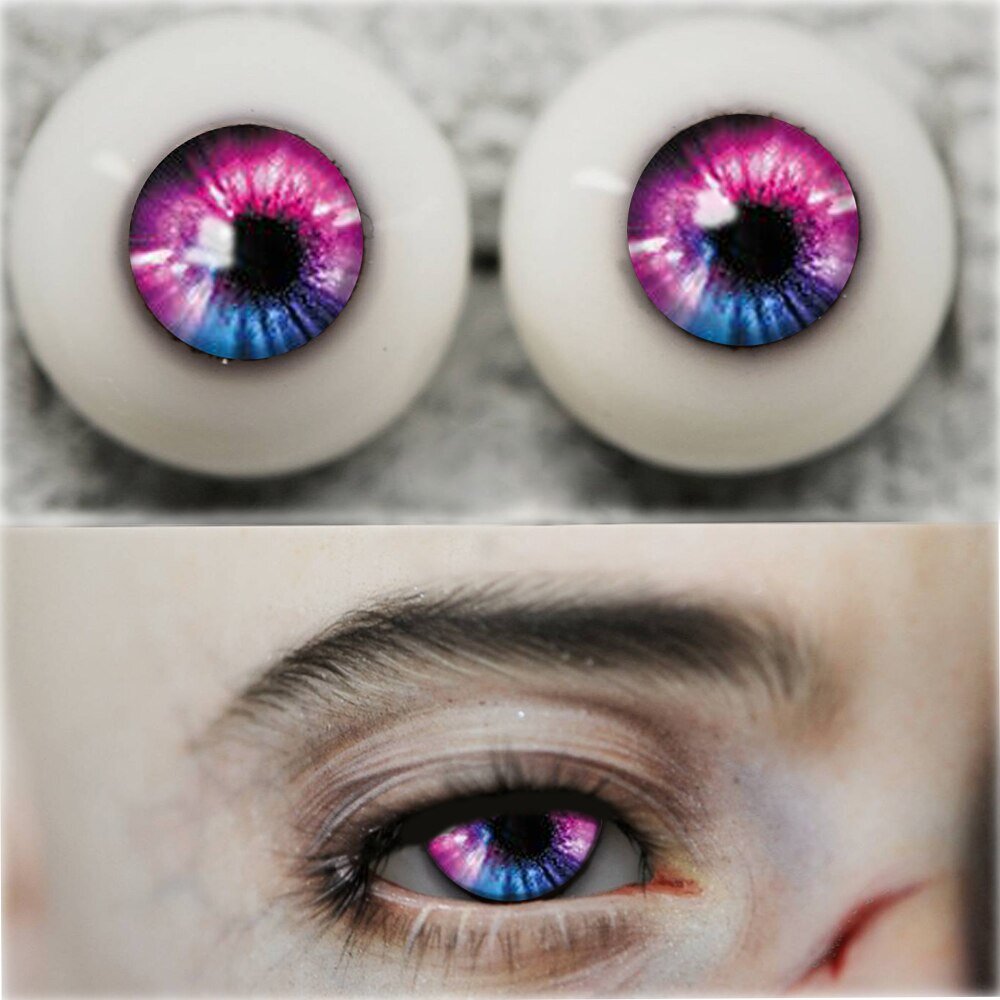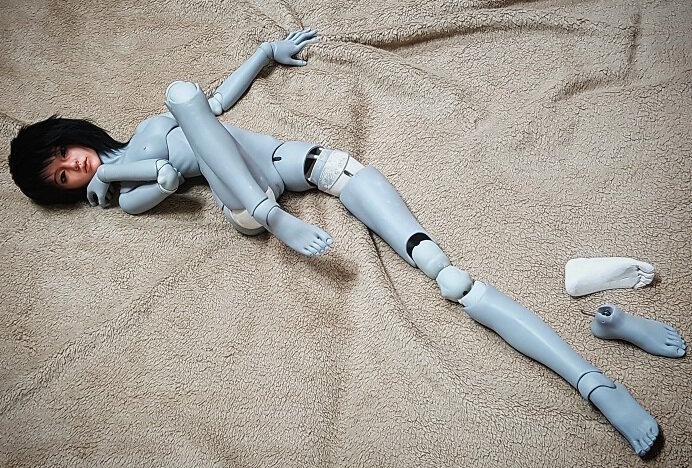An MFA's Definition of Ball-Jointed Dolls (with pictures!)
Carved articulated ivory doll from 2nd Century Rome.
An example of a wig on a ball-jointed doll.
Model: Fairyland/CP Minifee Siean
Ball-Jointed Doll as a name seems fairly self-explanatory, right? Artists and engineers are always looking for ways to improve their work. As technology and techniques evolve, so too do definitions as possibilities grow. Simpler times mean simpler labels, which may have worked until now!
These days, subdivisions. subgenres, and microlabels are part of the lexicon of seasoned and experienced collectors. Your personal mileage may vary depending on the doll, but this entry will be an attempt to consolidate the definitions into one place where collectors can learn and decide for themselves.
This post will also include images of different joints from different companies and provide names for the joint types. These names are commonly used, to my knowledge. This isn’t an exhaustive study; I have been a collector of bjd for almost a decade now and in that time I have seen a lot of discussions (and arguments) about the true definition of a ball-jointed doll. So I’m going to talk about it!
A BRIEF HISTORY
Articulated dolls have been around for milennia; the ball-jointed doll we know of began production in the 19th century. These were usually ceramic parts with composite (sawdust, glue, etc) for the ball joints. These dolls were strung with elastic to give them mobility while keeping major tension and stress off the joints themselves.
The major defining trait in Ball-Jointed Dolls is that the joints are ball-like, or at least round.
The earliest dolls were made of leather, cloth, fur, woven fibers, or anything that could be shaped into a humanoid form for play. Hard toys were usually carved from bone or wood.
As round shapes are difficult to carve consistently by hand, many of these toys had hinges or pins to simulate joints. Most simple toys had 4-8 points of articulation (shoulders, thighs minimum, sometimes elbows and knees or even wrists and ankles!).
As time went on, dolls began to have molded and cast heads, hands, and feet. These three features are some of the most difficult to recreate in a human figure, especially in soft materials. Bone, ivory, wood, and ceramic bisque were used for these detailed parts. Creating molds for these parts freed the craftsperson from having to re-make hands, feet, and faces every time a doll was made.
In the 19th century, the first ball-jointed dolls as we know them were produced. These were originally done in ceramic bisque and the ball joints allowed for a more natural range of motion than hinges and pins. Since round shapes could be cast by this point, producing the ball-joints became faster and easier, thus more accessible.
The Collector Community
Ball-jointed doll collectors are a notoriously specific, somewhat exclusive group. As with most hobbies that become a specific interest, there are spaces that define BJD differently. This hobby’s community is militantly anti- knockoff or counterfeit (recast) and their definitions of what a ball-jointed doll is are similarly strict.
BJD are considered a high luxury in doll-collecting. As such there are several artists and long-time doll clubs and collectors that establish many of the definitions. With the globalization of the web and the quick integration of ideas, there are some developments that print and traditional groups don’t, or can’t, keep up with.
Den of Angels was established in 2004 and is generally known as the authority on what counts as a BJD. In recent years (2018-2021) the opinions between DOA users and other groups (such as BJD groups on facebook) have split. DOA used to be the be-all end-all authority of what was considered “on-topic” as far as BJD, but some of their guidelines are debateable.
DOA is notoriously strict and exclusive, but remains a useful resource for research into companies or finding rare dolls.
DOLLS Magazine has categories for pretty much every type of doll, which allows for a wider definition of BJD than Den of Angels.
Ball-jointed dolls have been around for a long time. Their definitions used to be quite simple and most of these still apply:
No rooted hair (wears wigs)
Changeable eyes
Elastic-strung limbs and bodies
Ball-and-socket type joints with no hinges or pegs.
There is a hard definition between “toys” and ball-jointed dolls, and usually the deciding factor is whether or not the doll is strung with elastic.
Jun Planning Ai Doll - Can be found at Tuesday Morning stores or online.
Classic type porcelain/paperclay BJD. Note the limited mobility of the single ball joints.
Art—Bimong’s Narae Fusion body has double joints as well as engineered joints I’ll discuss later.
CULUR THEORY Ery stringing guide. Larger dolls require larger elastic.
Minifee Klaus - Ceberus Project/ Fairyland
Fairyland uses cap joints to improve the aesthetic and engineering of otherwise single-jointed knees. 1/4 and 1/3 scale models also have cap joints on their thighs which leaves room for a little extra movement.
The Modern Definition
There are standards to BJD construction that most artists tend to adhere to:
Points of Articulation - most BJD have at least 13 points of articulation (shoulders, elbows, wrists, hips, knees, ankles, and neck/head). Some older doll models (ex: Dollmore) have heel feet without ankle joints. As far as I can tell, the ankles and wrists are considered part of what makes a BJD more expressive than most mass-produced toys, and leaving these out makes them behave more like cloth and bisque dolls.
Ability to wear wigs - BJD are made to be customized, and the most basic customizations a collector can do is choosing wigs, eyes, and outfits. The majority of bjd come without sculpted hair. Impldoll and SIO2 are notable exceptions as they have resin hair pieces but are stil considered standard BJD. At larger scales (1/4-1/3+) real hair wigs tend to scale better and look more realistic in photos.
Changeable Eyes - As part of the customization appeal of these dolls, almost all BJD have empty eye slots for the owner’s choice of eyes. Even 2-D and manga-type sculpts tend to have slots for eye chips. Eyes are usually made of glass, resin, or acrylic plastic.
Anime-type eye chips (above) Vs Standard hemisphere eyes (Right)
Elastic Stringing - A BJD is constructed without the use of friction pegs and pins, instead relying on the tension of the elastic to keep the body together and achieve poses. Dolls such as Obitsu, Dollfie Dream, Smart Doll, Monster High, Bratz, and Barbie are excluded from the BJD classification by this requirement.
Resin as a material - Before the rise of plastics these dolls were usually made in ceramic, which was delicate and fragile. The majority of Ball-jointed dolls produced these days are made of cast urethane resin parts. Resin is a (relatively) cheap material with less chance for fatal errors than porcelain or bisque. Resin can be cast in an endless variety of colors. In the last few years, 3-D printing has become more affordable and accessible, meaning sculptors can print their own resin or plastic models at home. This resin is notably more brittle than urethane but otherwise behaves very similarly.
Finally, there are a handful of dolls that are produced in ABS. ABS is a hard, durable plastic that is used in many children’s toys and items that are under high stress. Hujoo was a well known company for these types of dolls, but the company ceased production in 2020. Another common ABS doll even in the United States is the Jun Planning Ai line. Den of Angels does not consider these on-topic as they are not resin dolls.
You cannot clean ABS dolls with acetone; ABS will melt with some solvents and this has ruined many a newbie’s week when they try to clean off the face on an ABS doll and the plastic starts to rub off along with it!
New developments such as sculpted or cast hair (ie SIO2 and Impldoll), sculpted or paintable eyes , and more action figure-like engineering (Bimong, Iplehouse, Popovy) have been integrated into a number of BJD models and are generally accepted in all forums.
These are where the classic definitions fall apart. While dolls evolved in their own way, so did other types of articulated toys. The engineering involved in creating these toys fed back into doll design. A major concern of many collectors is a doll’s Poseability, or how well and naturally a doll can take and hold a pose. With single-jointed dolls the most common hangup is the 90-degree maximum range of the arms and occasionally the doll’s inability to sit up unassisted. This is where Double Joints come in: double joints are oval or peanut-shaped with two slotted ends. This allows a doll’s limb to fold all the way to touch the shoulder and allows a doll to sit on their knees. In some, there is a double joint in the hips that let the doll pull their legs up to their chest.
Another type of double-joint is the Cap joint, where a bowl-shaped hemisphere or cap is placed over a ball joint to give it a little extra mobility. This usually ends up being more like 1.5 joints rather than a double, but the major advantage to the cap system is they tend to be aesthetically pleasing and can hide big gaps and elastic slots on the body. They also make clothing fold more naturally on the body!
Many modern dolls have an additional thigh joint that acts as both a swivel and a double-joint. This modification lets the dolls turn their legs for better balance and posing as well as (usually) allowing dolls to curl up.
Within the classic BJD community, the use of cap or peanut joints (anything that isn’t a ball) disqualifies the doll from being considered a “classic” BJD, but these more articulated models still qualify as BJD. Doll engineering is constantly changing as the collectors expect different things from their dolls. Some collectors choose certain bodies for the doll-like look or aesthetic. Many younger and newer bjd collectors want natural posing in their bodies even if it means more joints and seam lines.
I am one of the latter: with the exception of two classic lines, all of my ball-jointed dolls prioritize poseability over looks and all of them are double-jointed. This is because I tend to dress and take mine outside, where they interact with uneven surfaces and require more complex balancing than classic dolls can achieve. A collector’s method of interacting with their dolls is called a play style, and usually indicates how much wear and tear a doll may have or how a doll owner will dress and stage their doll. People with milder play styles may just dress and display their dolls, moving them occasionally to new displays. More active play styles involve taking the doll outside, dressing them more often, or moving them around consistently.
Art—Bimong Narae60 (1/3 scale) body. Note the complex engineering of the leg joints.

